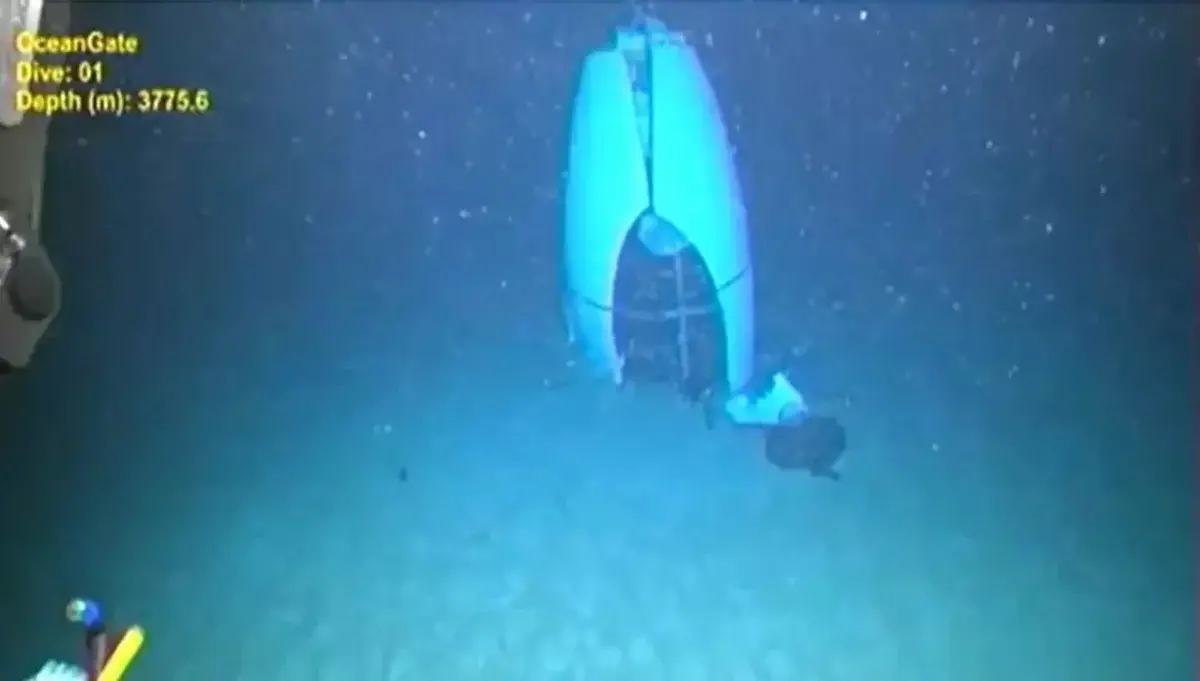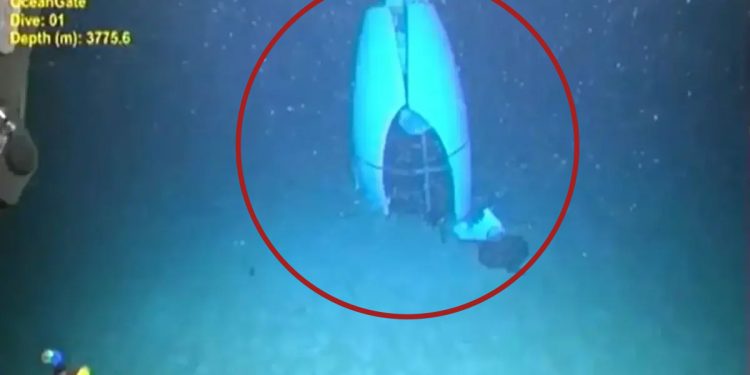In a recent public Coast Guard hearing, haunting new revelations surrounding the Titan submersible disaster surfaced. Over 15 months have passed since the ill-fated vessel embarked on its journey to explore the wreckage of the Titanic, located 12,500 feet beneath the Atlantic Ocean. Tragically, the Titan imploded during its descent, claiming the lives of all five passengers aboard.
Unveiling the Wreckage
The U.S. Coast Guard shared the first public image of the wreckage—a haunting screenshot taken from a video captured by a remotely operated underwater drone. The footage, recorded on June 22, 2023, just four days after the Titan vanished, shows the submersible’s tail cone and other debris scattered on the ocean floor. A day after the image was taken, the Coast Guard officially declared the Titan lost, confirming the fate of the passengers.
This chilling image serves as a stark reminder of the dangers faced by the crew, especially in light of revelations about OceanGate’s disregard for safety concerns. Stockton Rush, the former CEO of OceanGate, was among those who perished. In a grim twist of irony, Rush had previously ignored repeated warnings about the submersible’s safety, threatening critics with legal action to stifle their concerns.

A Troubled History
The public hearing marked the first time officials provided specific details about the disaster, shedding light on a number of alarming issues. According to a report from The New York Times, the U.S. Coast Guard identified a staggering 70 equipment-related problems with the Titan in 2021, followed by an additional 48 issues in 2022. These flaws went largely unaddressed, contributing to the fatal consequences that followed.
Just weeks before the disaster, the Titan was reportedly found “partially sunk” after a routine test. And days before its final mission, passengers on a separate expedition were violently thrown against the vessel’s walls as it resurfaced, underscoring the gravity of its design flaws.
Design Flaws and Safety Oversights
Experts have since criticized several aspects of the Titan’s design, highlighting cost-cutting measures implemented by OceanGate. One of the more notable flaws was its unusual pill-like shape, a deviation from the industry-standard spherical design that has been proven to withstand the immense pressure of deep-sea environments. Furthermore, Stockton Rush openly admitted to using expired carbon fiber materials purchased from Boeing, a decision experts now consider a grave error. Carbon fiber, while strong, deteriorates over time and was deemed an unsuitable choice for a vessel subjected to extreme underwater pressure.
Unanswered Questions
While the exact cause of the Titan’s catastrophic implosion remains unknown, the Coast Guard hearing represents the beginning of a two-week series of public proceedings. These investigations are expected to reveal additional details about the tragedy, potentially offering a clearer picture of the events that led to the fatal accident. The public can anticipate more grim revelations as authorities continue to scrutinize OceanGate’s operations and safety practices.
As the investigation unfolds, many are left grappling with the questions raised by the Titan’s ill-fated voyage. Could this disaster have been prevented if warnings had been heeded? And what steps must be taken to ensure such tragedies do not occur in the future?
The legacy of the Titan disaster underscores the importance of stringent safety measures and the dangers of cutting corners in high-risk endeavors like deep-sea exploration. Moving forward, the lessons learned from this incident will undoubtedly shape the future of submersible technology and underwater research.











